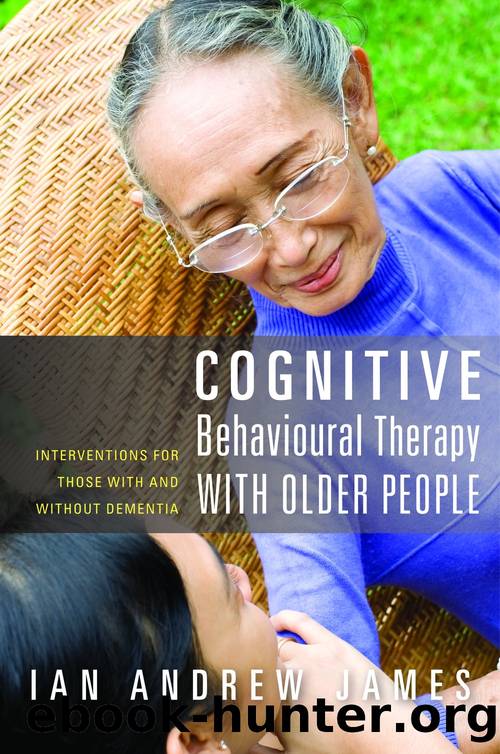Cognitive Behavioural Therapy with Older People by James Ian Andrew;

Author:James, Ian Andrew; [Ian Andrew James]
Language: eng
Format: epub
ISBN: 9780857002839
Publisher: Jessica Kingsley Publishers
Published: 2014-05-07T00:00:00+00:00
9.2.ii: Item 2 â Feedback
The therapist should both provide and elicit feedback throughout each session. The key features of âfeedbackâ are outlined in the CTS-R as shown in the box.
This item stresses the importance of two-way feedback. By âsummarisingâ and âchunkingâ information at regular intervals, the therapist can emphasise the major features, synthesise new material and highlight issues that require further clarification. By eliciting the patientâs feedback (thoughts and feelings) regarding the therapy, the therapist can check the patientâs attitude, knowledge base and understanding.
Chunking information and eliciting feedback should occur frequently. On occasions, when either particularly important or confusing material is being discussed, the feedback should occur after each major point; this can also help âcontainâ distressing issues. During normal short-term CBT, the two-way feedback should occur at least every ten minutes. Major summaries should occur at the beginning and end of each session, to help reinforce and consolidate therapeutic material. In Mohlman and Gormanâs (2005) study, using enhanced CBT for older people, during the last five minutes of each session, the therapist led an âexpanding reviewâ of all concepts and techniques learned to date.
Key features: The patientâs and therapistâs understanding of key issues should be helped through the use of two-way feedback. The two major forms of feeding back information are through general summary and chunking of important units of information. The use of appropriate feedback helps both the therapist to understand the patientâs situation, and the patient to synthesise material enabling her to gain major insight and make therapeutic shifts. It also helps to keep the patient focused.
Three features need to be considered when scoring this item:
(i)presence and frequency, or absence, of feedback; feedback should be given/elicited throughout the therapy â with major summaries both at the beginning (review of week) and end (session summary), while topic reviews (i.e. chunking) should occur throughout the session
(ii)appropriateness of the contents of the feedback
(iii)manner of its delivery and elicitation (NB: can be written).
Download
This site does not store any files on its server. We only index and link to content provided by other sites. Please contact the content providers to delete copyright contents if any and email us, we'll remove relevant links or contents immediately.
Periodization Training for Sports by Tudor Bompa(7936)
Why We Sleep: Unlocking the Power of Sleep and Dreams by Matthew Walker(6376)
Paper Towns by Green John(4815)
The Immortal Life of Henrietta Lacks by Rebecca Skloot(4271)
The Sports Rules Book by Human Kinetics(4087)
Dynamic Alignment Through Imagery by Eric Franklin(3931)
ACSM's Complete Guide to Fitness & Health by ACSM(3830)
Kaplan MCAT Organic Chemistry Review: Created for MCAT 2015 (Kaplan Test Prep) by Kaplan(3812)
Introduction to Kinesiology by Shirl J. Hoffman(3633)
Livewired by David Eagleman(3541)
The River of Consciousness by Oliver Sacks(3425)
The Death of the Heart by Elizabeth Bowen(3348)
Alchemy and Alchemists by C. J. S. Thompson(3305)
Descartes' Error by Antonio Damasio(3168)
Bad Pharma by Ben Goldacre(3113)
The Emperor of All Maladies: A Biography of Cancer by Siddhartha Mukherjee(2941)
The Gene: An Intimate History by Siddhartha Mukherjee(2934)
The Fate of Rome: Climate, Disease, and the End of an Empire (The Princeton History of the Ancient World) by Kyle Harper(2884)
Kaplan MCAT Behavioral Sciences Review: Created for MCAT 2015 (Kaplan Test Prep) by Kaplan(2827)
